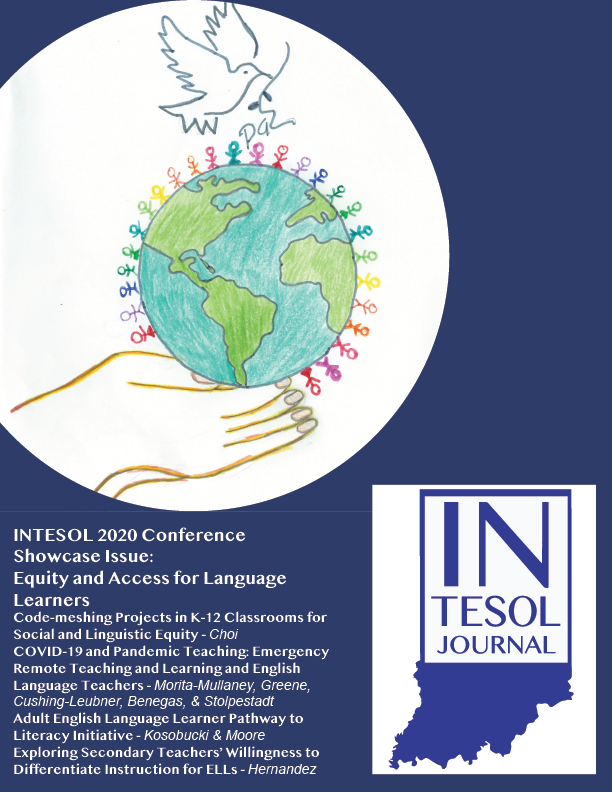COVID-19 and Pandemic Teaching: Emergency Remote Teaching and Learning and English Learner Teachers
DOI:
https://doi.org/10.18060/25273Keywords:
COVID-19, emergency remote teaching and learning (ERTL), English learners, EL instructionAbstract
The purpose of this study is to illuminate how English Learner (EL) teachers in the Great Lakes region responded to the sudden shift to emergency remote teaching and learning (ERTL) at the onset of COVID-19 school closures in March 2020. Using an online survey, we examined how EL teachers from Indiana, Minnesota, and Wisconsin continued legal provisions of instruction and service through the end of the 2019-2020 school year. We look closely at the state of Indiana, a state with a more recent immigrant population and where requirements for EL licensure and preparation are not yet required. Although findings show that schools and districts violated legal requirements for ELs, this is polarized by the lack of required training and licensure in Indiana among those serving in the role of EL teacher.
Downloads
Published
Issue
Section
License
Copyright (c) 2021 Trish Morita-Mullaney, Michelle Greene, Jenna Cushing-Leubner, Michelle Benegas, Amy Stolpestad

This work is licensed under a Creative Commons Attribution-NonCommercial 4.0 International License.


